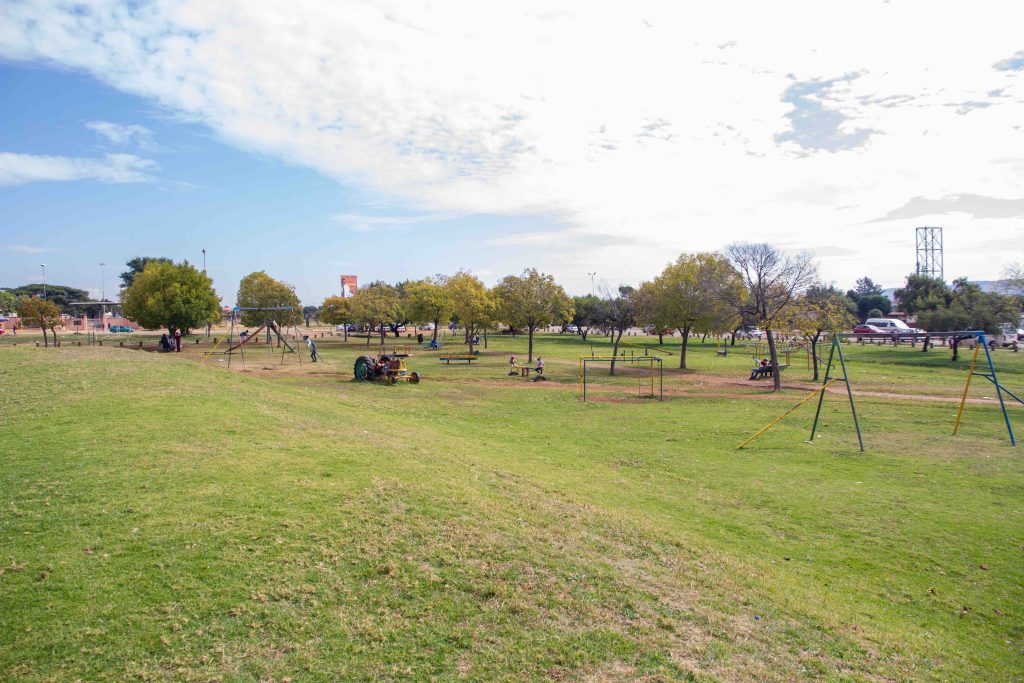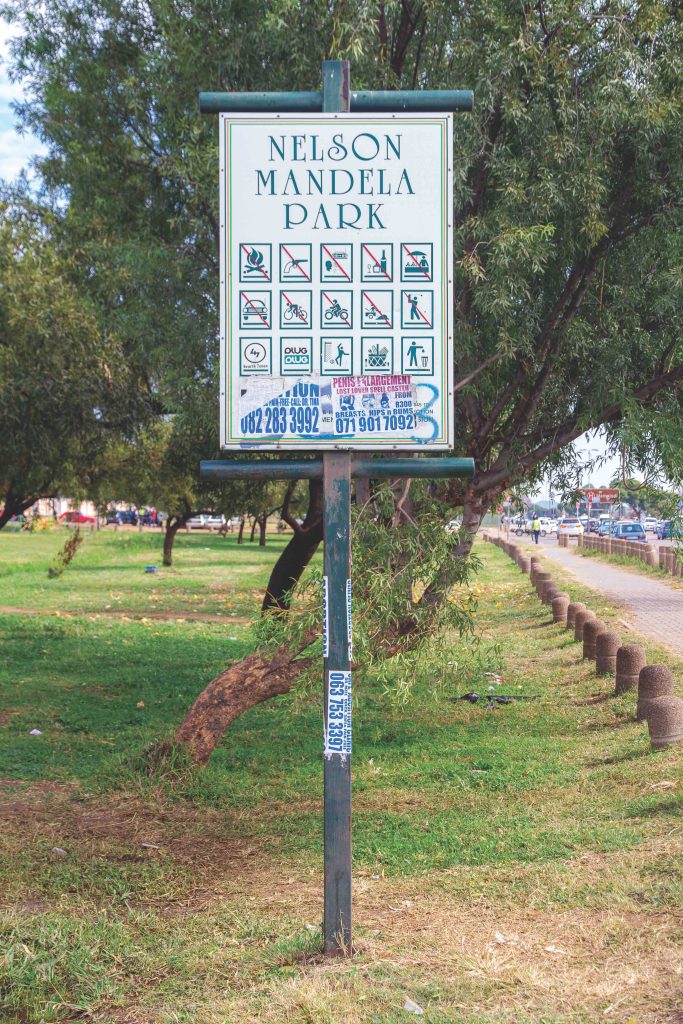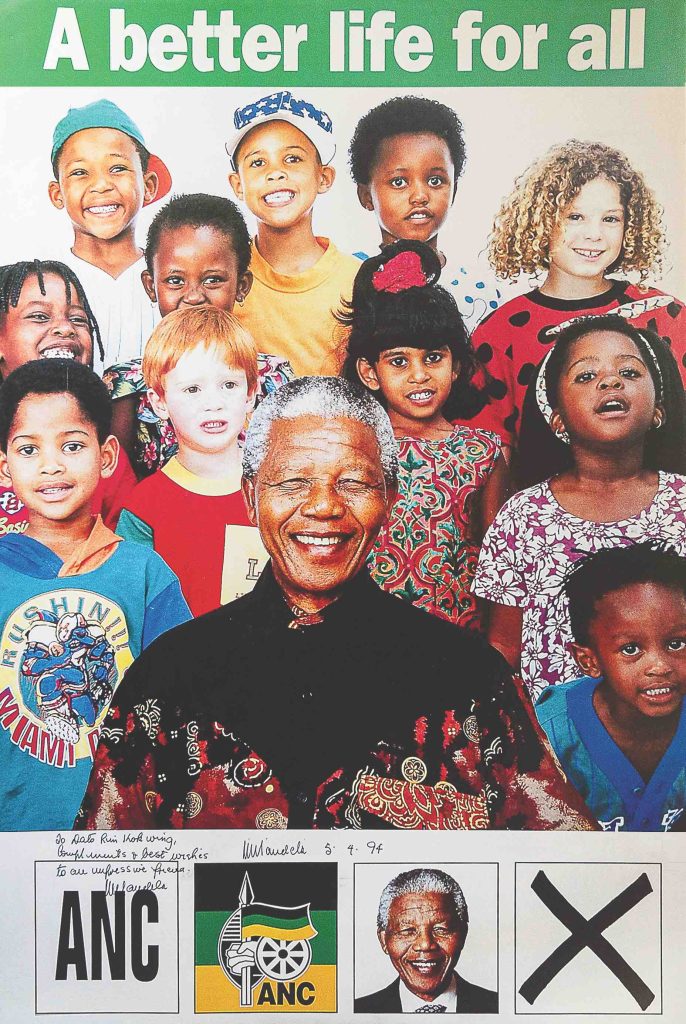Mamelodi, Pretoria, Gauteng, South Africa. GPS 25°43’00.0”S 28°22’14.7”E

+ + +
Established on the farm Vlakfontein in 1945, the township of Mamelodi emerged north of Pretoria as a settlement for temporary labourers. Its name, adopting the Tshwana phrase for ‘Mother of Melodies’ in 1950, encapsulated a new identity for the community as it shifted from a transitory labour camp to a permanent dwelling for many post-World War II workers.1 Now, Mamelodi thrives as a township abounding in historical richness and cultural diversity, characteristic of the evolving urban landscape of South Africa.2 The fabric of Mamelodi is one of contrast, where expansive malls stand against the backdrop of simple streetside businesses. This juxtaposition captures the essence of the township’s vibrant life, where the energy of local music intermingles with the daily hum of street activity. The township’s architecture, primarily composed of low-quality housing, reveals the disparities in access to essential services, reflecting broader socio-economic narratives within South Africa.
Mamelodi is also home to a network of institutions that cater to the education and health of its residents, as well as recreational spaces such as Nelson Mandela Park. This park, situated on Tsamaya Avenue opposite the Mamelodi Regional Hospital, resulted from the Greening of Mamelodi initiative, designed to offer a communal recreational environment. The park serves as a leisurely retreat with its tree-lined spaces and playgrounds and plays an integral role in connecting the community.3,4 The park’s opening in 1996 by Nelson Mandela marked an important moment, symbolising the community’s revival and the desire to beautify their surroundings in the spirit of the new patriotism that Mandela’s leadership inspired. Despite the evident wear and deterioration over the years, Mandela’s aspirations for the park to be a place of joy and learning for children are evident in the ongoing use of the park’s facilities.

An analysis of the photographic documentation highlights the park’s continued relevance to Mamelodi East’s community life. It remains a space for social gatherings and sports and a thoroughfare to the local hospital, although the park faces challenges in maintenance and safety. The broken playground equipment and absence of proper fencing reflect the need for revitalisation to ensure the park’s safety and functionality. Interestingly, the park’s designation as a space honouring Mandela is minimal. This presents a stark functional role, with the park facilitating daily life rather than a commemorative space. The prevalence of English in signage, despite the linguistic diversity of Mamelodi, suggests a universal approach to communication within this multifaceted community.
Ensuring the park’s upkeep and enhancing the visibility of Mandela’s legacy is essential to preserving the place’s significance beyond its current use, honouring the memory and principles of Mandela for future generations. It also exemplifies the importance of public places in urban communities – not just as places of leisure and play but as embodiments of collective memory and identity.
The park’s narrative is a microcosm of the broader South African experience, reflecting the nuances of post-apartheid urban development, community resilience, and the challenges of cultural preservation within evolving townships.
+ + +
From the Archive at the Centre of Memory (ACoM)
Item code: ZA COM NMG-931
Title: ANC Election Poster
Description: Poster with Madiba and the children written “A better life for all” signed by Madiba – Dated 5/4/1994.
Size: 115cm x 76cm
Medium: Printed paper

Items related to the Nelson Mandela Park in ACoM
1) ZA COM MR-S-417: President Nelson Mandela’s speech at the Official Opening of the Nelson Mandela Community Park in Mamelodi.
+ + +
References
1. Van der Waal, G.M. (2000). Mamelodi Heritage Route. https://repository.up.ac.za/bitstream/handle/2263/56896/mamelodi_heritage_route_optimised.pdf?sequence=1&isAllowed=y
[Accessed 15 February 2024].
2. Embassy Direct (2016). Mamelodi – The Mother of Melodies. https://www.embassydirect.co.za/2016/07/11/mamelodi-the-mother-of-melodies/ [Accessed 15 February 2024].
3. Nelson Mandela Foundation (2024). Item 1116 – President Nelson Mandela Park in South Africa and Forest in Israel by the Jewish National Fund of South Africa, Trees for Africa and the Department of Water Affairs and Forestry to recognise Mr Mandela’s commitment and dedication to the development of the nation.
https://atom.nelsonmandela.org/index.php/za-com-mr-t-1116 [Accessed 15 February 2024].
4. Walter Sisulu Environmental Centre (n.d.). Walter Sisulu Environmental Centre History and Founders. https://wsec.org.za/about/wsec-history-and-founders/ [Accessed 15 February 2024].
Photography © 2022 Fidel Thabang Mosupye
